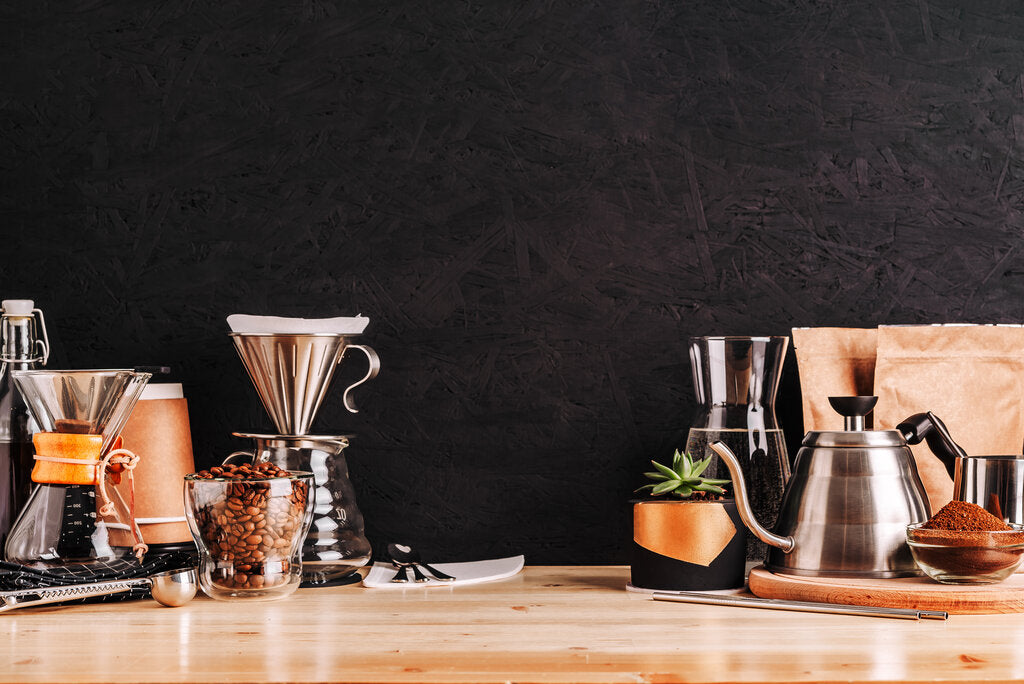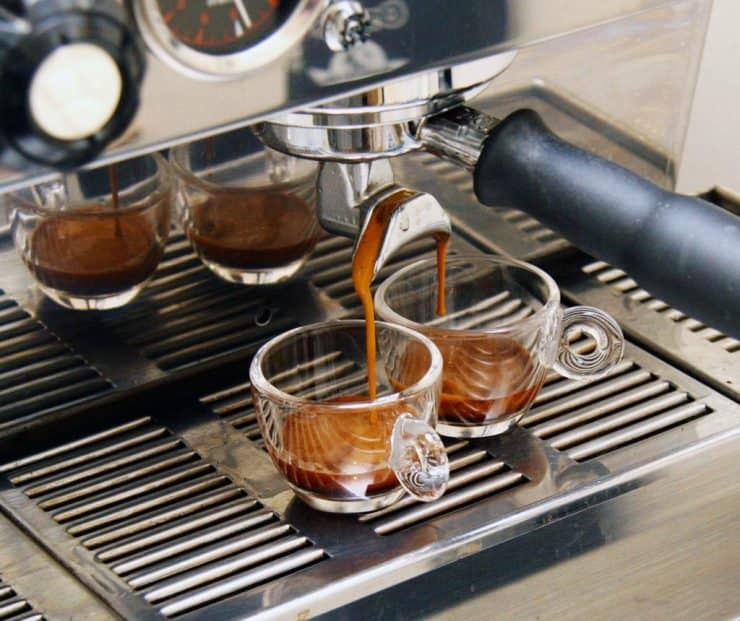A Comprehensive Guide to Various Coffee Brewing Methods You Should Attempt
Wiki Article
The Scientific Research Behind Coffee Brewing: Exactly How Temperature and Time Affect Your Beverage
Comprehending the scientific research behind coffee brewing exposes that temperature and time are not simple variables however essential components that determine the drink's flavor account and general quality. As we check out the subtleties of these components, the inquiry develops: how can one successfully equilibrium temperature level and time to achieve that perfect brew?The Chemistry of Coffee Removal
The chemistry of coffee extraction dives right into the elaborate procedures that change raw coffee beans right into the aromatic drink appreciated worldwide. This makeover primarily includes the solubility of different compounds existing in the beans, which are affected by aspects such as grind size, water high quality, and the brewing approach employed.During the brewing process, warm water works as a solvent, extracting soluble compounds, consisting of caffeine, acids, lipids, and sugars, from the coffee premises. Each substance adds to the flavor profile, fragrance, and body of the final beverage. Acids are responsible for intense and tasty notes, while oils contribute to an abundant mouthfeel.
The removal procedure is not consistent; various compounds dissolve at various prices. The preliminary stages of developing remove acids and sugars, resulting in a positive level of acidity, while extended removal can lead to anger as a result of over-extraction of unwanted compounds. Understanding these chemical communications is important for optimizing developing techniques, as the balance between removal time and water temperature can dramatically influence the total quality of the coffee. Ultimately, mastering the chemistry of coffee removal is essential to achieving a all-around and delicious mug.
Ideal Brewing Temperatures
Finding the best developing temperature is essential for opening the full possibility of coffee flavors and aromas - coffee brewing methods. Study suggests that the optimal array for developing coffee exists in between 195 ° F to 205 ° F(90 ° C to 96 ° C) Within this range, the extraction process effectively dissolves the desirable soluble substances in coffee beans, resulting in a well balanced and tasty cupBrewing at lower temperature levels, such as below 195 ° F(90 ° C ), might lead to under-extraction, producing an acidic and weak brew with low-key tastes. Alternatively, developing at temperature levels exceeding 205 ° F(96 ° C) can bring about over-extraction, producing a bitter and rough taste as a result of the extreme dissolution of unfavorable compounds, such as tannins.
Moreover, the optimal developing temperature can vary depending upon the coffee bean type and roast degree. Lighter roasts usually benefit from a little greater temperature levels to enhance their complicated flavor accounts, while darker roasts may be much better matched to reduced temperature levels to minimize bitterness.
Inevitably, preserving precision in brewing temperature levels is crucial for achieving an unified equilibrium of flavors, ensuring that every mug of coffee provides a gratifying sensory experience.
Influence of Developing Time
Developing time plays a pivotal duty in figuring out the flavor account and total high quality of coffee. Shorter developing times can result in under-extraction, leading to a weak or sour flavor, as not sufficient soluble substances are liquified.Ideal brewing time varies depending on the method made use of and the work size of the coffee. For example, a French press normally needs regarding 4 mins, while coffee removal is generally finished within 25 to 30 seconds. It is necessary to adjust developing time in combination with other variables, such as water temperature and coffee-to-water proportion, to attain the preferred taste account.
Recognizing the influence of developing time makes it possible for coffee lovers to improve their developing methods, ultimately boosting the sensory experience of their mug (coffee brewing methods). With cautious focus to this variable, one can unlock the complete capacity of the coffee, revealing its unique characteristics and subtleties
Developing Methods and Their Impacts

As an example, techniques like French press and cold brew permit a longer steeping time, leading to a fuller body and durable taste because of enhanced extraction of oils and soluble solids. On the other hand, espresso developing utilizes high stress and a web shorter extraction time, producing a concentrated shot that emphasizes extreme flavors and a rich crema.
Pour-over methods, such as Chemex or V60, provide an even more controlled removal procedure, permitting the brewer to control flow rate and water distribution, which can improve illumination and clearness. At the same time, percolation approaches cycle water via the coffee grounds several times, resulting in a more powerful, commonly bitter taste.
Last but not least, using paper filters versus steel filters can additionally impact the last taste; paper filters commonly yield a cleaner cup by capturing oils and fine particles, while metal filters enable more oils to pass through, adding to a fuller mouthfeel - coffee brewing methods. Understanding these subtleties can raise the coffee experience substantially
Tips for Improving Your Mixture
A well-executed brew can change also the easiest coffee right into an exceptional experience. Grind over at this website the beans simply prior to making to make the most of freshness, making certain the work dimension matches your brewing method-- coarser for French press and finer for espresso.Water top quality plays a vital function; usage filteringed system water devoid of contaminations. The optimal developing temperature varies in between 195 ° F and 205 ° F(90 ° C to 96 ° C ) As well warm can scorch the coffee, while as well amazing may under-extract flavors.
Timing is similarly essential. For immersion approaches, steeping for 3 to five mins is optimal, whereas drip techniques usually take around five mins. Explore mixture times to locate your preferred stamina.

Conclusion
In summary, the elaborate connection between temperature and time is paramount in the coffee brewing process. Sticking to optimum developing temperatures in between 195 ° F and 205 ° F, together with precise timing tailored per method, guarantees the desired taste profile is achieved. Comprehending these scientific concepts encourages people to improve their developing techniques, eventually leading to a more balanced and enjoyable coffee experience. Proficiency of these factors is vital for any kind of coffee fanatic seeking quality in their drink.Understanding the scientific research behind coffee developing reveals that temperature and time are not mere variables yet essential elements that determine the beverage's taste profile and total high quality. Understanding these chemical communications is essential for maximizing brewing strategies, as the balance in between extraction time and water temperature level can considerably affect the general top quality of the coffee.Brewing time plays a crucial function in determining the taste account and general top quality of coffee. By focusing on these aspects-- bean quality, grind dimension, water temperature level, steeping time, and ratio-- you can boost your coffee brewing process, resulting in a continually exceptional cup.
In summary, the complex relationship in between temperature level and time is vital in the coffee brewing process.
Report this wiki page